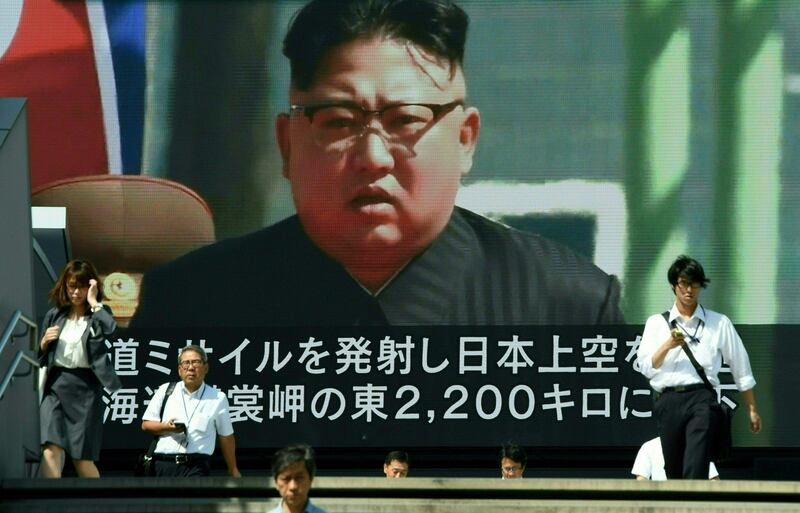North Korea launched an intermediate-range missile that flew over Japan in its longest-ever flight, showing that leader Kim Jong-un is defiantly pressing ahead with his weapons programmes despite US-led international pressure.
Here is a look at the recent weapons tests:
——
February 11: North Korea successfully tested a land-based KN-15 missile, a new solid-fuel intermediate-range missile, which travelled 499 kilometres into the Sea of Japan. General John Hyten, the commander of US Strategic Command, told a congressional panel it marked a significant advancement for North Korea because it was its first successful solid-fuelled missile fired from a mobile launcher. Mobile-launched missiles are harder to track and can be fired at short notice
March 5: North Korea launched five medium-range Scud-er (extended range) missiles. Four travelled more than 965km, the upper limit of their range, into the Sea of Japan.
March 21: North Korea tested a mobile-launched missile which exploded "within seconds of launch," according to US Pacific Command.
April 4: a KN-17 missile was launched just days before Chinese President Xi Jinping met with President Donald Trump at Mar-a-Lago,
April 15: North Korea launched another KN-17 that exploded shortly after launch.
April 28: another KN-17 launch. This time the missile travelled 33km before breaking up in mid-air.
May 14: North Korea fires a newly developed intermediate-range Hwasong-12 missile it says can carry a heavy nuclear warhead.
May 21: North Korea tests a Pukguksong-2 missile that uses solid fuel, which is harder to detect by outsiders before launch.
June 8: North Korea fires several projectiles believed to be short-range surface-to-ship cruise missiles.
July 4: North Korea test-launches its first intercontinental ballistic missile, the Hwasong-14, at a highly lofted trajectory.
July 28: North Korea fires another Hwasong-14, again at a lofted trajectory, but outside experts say its full range would reach far into the American mainland, including cities such as Chicago.
August 9: North Korea announces a detailed plan to launch a salvo of ballistic missiles toward the US Pacific territory of Guam, a major military hub and home to US bombers. President Trump threatens North Korea with "fire and fury like the world has never seen."
August 25: Three short-range ballistic missiles fired into the Sea of Japan. The second appears to blow up almost immediately; the others fail in flight.
August 29: North Korea fires an intermediate-range Hwasong-12 that flies over Japan before plunging into the northern Pacific Ocean.
September 3: North Korea carries out its sixth and most powerful nuclear test to date, claiming it was a hydrogen bomb.
September 15: North Korea fires an intermediate-range missile over Japan into the Pacific. It flew about 3,700 kilometres, its longest-ever flight.





